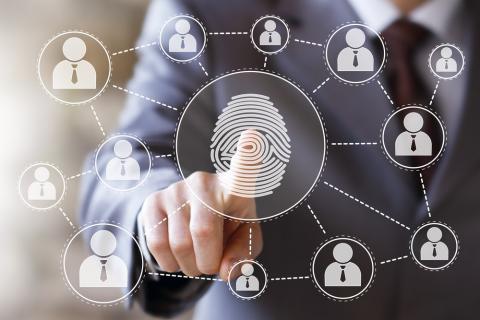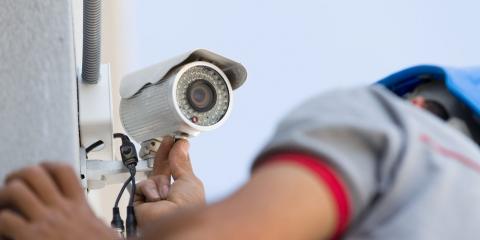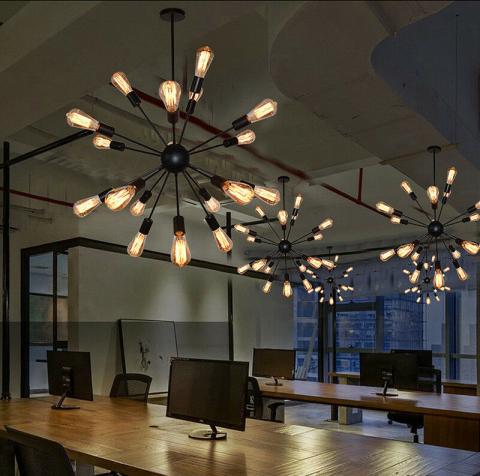+1(209) 348-9544
order@myessayservices.com
+1(209) 348-9544
order@myessayservices.com
![]() Are you in High School, College, Masters, Bachelors or PhD and need assistance with your essay or research paper? All you need is to buy a research paper written by a specialist in your academic field . When you buy a research paper from us, we offer you an original, nil plagiarized dedicated proofreader, writer and editors who is PhD or Masters qualified. MyEssayServices.com is an experienced service with over 9 years experience having delivered over 83,000 essays over the years.
Are you in High School, College, Masters, Bachelors or PhD and need assistance with your essay or research paper? All you need is to buy a research paper written by a specialist in your academic field . When you buy a research paper from us, we offer you an original, nil plagiarized dedicated proofreader, writer and editors who is PhD or Masters qualified. MyEssayServices.com is an experienced service with over 9 years experience having delivered over 83,000 essays over the years.

Introduction
The physical security of any structure is always a top priority for any individual involved in the design and construction of the structure. In today’s world where the levels of insecurity continue to soar with each passing day, these individuals cannot afford to get anything wrong insofar as security is concerned. It is their duty to create structures that are aesthetically pleasing yet completely secure. In this manner, they are able to guarantee their clients both comfort and security (Reese, Tong, & Library of Congress, 2010). There are a number of key factors that determine the security of a structure. By appropriately addressing these items, the security of the building and all the property inside is guaranteed.
Barriers
 The barriers in any building are the most important security structures. This is because these barriers are primarily responsible for determining the number of security threats that the building will experience. It is noteworthy that a large percentile of criminals comprises petty thieves looking to make quick money. In this light, having physically intimidating and strategically positioned barriers is enough to deter almost 90 percent of all potential security threats (Siegel et al., 2003). Being the outermost ‘layer’ of the building, it is necessary to have in place secure structures that are burglar-proof.
The barriers in any building are the most important security structures. This is because these barriers are primarily responsible for determining the number of security threats that the building will experience. It is noteworthy that a large percentile of criminals comprises petty thieves looking to make quick money. In this light, having physically intimidating and strategically positioned barriers is enough to deter almost 90 percent of all potential security threats (Siegel et al., 2003). Being the outermost ‘layer’ of the building, it is necessary to have in place secure structures that are burglar-proof.
The first step in ensuring that the barriers for this company are effective is creating tall stone fences. Being located in a less developed area as compared to many cities, GlobaCorp faces potential security threats. In this light, tearing down the old barbed wire fence and replacing it with a tall stone fence is a sure way to increase the security of the facility. Due to the sensitive nature of the equipment in the facility, a wall that is approximately eight feet high will serve this purpose well (Hale & Moberg, 2005). This will prevent entries through the fence.
In addition to this, leaving the areas surrounding the facility open and wide will deter any potential security threats that even manage to get past the fence. These wide open areas serve to psychologically remind the invaders that they can be easily seen (Reese, Tong, & Library of Congress, 2010). The knowledge that one can be easily seen while carrying out their criminal activity is very likely to deter any criminals. In addition to this, the company may also plant tall trees around the surrounding. This gives the facility an aesthetic view without compromising on the security. The trees will compliment the environment without providing hiding spots on the ground to invaders.
Access Control
This refers to the control and monitoring of human traffic through certain points in the facility. The essence of access control is to prevent any visitors or invaders from accessing the main offices and other secure areas within the facility. In this way, even if invaders manage to find their way into the facility, they will not have access to the offices in which the valuable material is found.
They will be forced to reside in the ‘public’ areas within the facility such as the reception area and the lounge. This is one of the best methods of ensuring facility security (Siegel et al., 2003). The most common approach towards access control is in the availability of identification cards. The use of identification cards within the facility is a way of restricting access to the employees of the company. The restriction of visitor ID cards from accessing offices and other secure areas ensures that only employees are capable of access to these areas.
The use of keys is also a good way of bolstering the security of the facility (Hale & Moberg, 2005). However, there is a great need for GlobaCorp to embrace change and decide to upgrade from the traditional mechanical access control systems. This is because the increase in the number of employees translates into an increased number of keys in circulation. Should one of the employees lose their key, the scenario poses a significant threat to the entire facility.
 In this view, it is necessary that the company adopts electronic access control methods. The development of technology over the years has fostered the development of top dollar electronic access control systems (Reese, Tong, & Library of Congress, 2010). These systems are designed to fully oversee the security of a facility insofar as access control is concerned. These electronic access control systems are placed at all the gates and doors in the facility.
In this view, it is necessary that the company adopts electronic access control methods. The development of technology over the years has fostered the development of top dollar electronic access control systems (Reese, Tong, & Library of Congress, 2010). These systems are designed to fully oversee the security of a facility insofar as access control is concerned. These electronic access control systems are placed at all the gates and doors in the facility.
While having electronic systems controlled by the guards within the facility is a good thing, the company needs to see the bigger picture and look into the future. The rate at which it is growing warrants top performance. It is, therefore, necessary that the company invests in the installation of biometric systems within the company. The nature of the equipment and information stored in the facility is extremely confidential.
For this reason, it is mandatory that biometric systems are installed to prevent any security breaches. The reliance of biometric systems on the special characteristics of individuals is the main reason this method is the best in terms of access control. Every human being has distinct fingerprints, retinas, face structures, voices and palm prints (Siegel et al., 2003). Taking advantage of this exclusivity, the biometric systems are virtually incapable of being compromised.
This is because the use of any of these special characteristics by an individual to authorize any activity or passage can easily be traced. The electronic trail that these biometric devices leave is the biggest advantage. In this way, it is possible to determine who authorized what, and at what time. The leverage provided by these systems is a foolproof guarantee in itself. Adopting these systems will ensure GlobaCorp remains a safe and secure facility.
Intrusion Detection Systems
Many intruders are synonymous with stealth movement. The need to move undetected is a great plus for any intruder. The inability to hear and detect an intruder sneaking into the facilities is a great challenge that needs to be addressed (Newman, 1972). In order to deal with this problem, it is necessary to employ the use of alarms and sensors. Alarms are installed into the system of the facility to ensure that the employees or guards at the facility can sound an alarm in case of any potential threat.
The alarms can be designed to be triggered by a number of factors. The glasses within the facility can be linked to the alarms such that any breaking of glass sounds the alarm. This is a very effective method of improving the facility security in GlobaCorp, seeing that the facility has plenty of glass windows. By sounding an alarm should any glasses be broken, then the facility’s security is almost guaranteed insofar as intruders breaking windows is concerned.
In addition to the alarms, GlobaCorp must install motion and contact sensors within the compound and the facility. These two types of sensors serve to detect the positions of intruders. Having them hidden and located strategically along the main areas in the facility and compound will ensure security. These systems will alert the security personnel of any movement or contact at the specific locations. In this way, the guards can easily apprehend any intruders without having to undergo the rigors of playing ‘chase the intruder’ (Reese, Tong, & Library of Congress, 2010).
In order to work effectively, the alarms sounded must be loud. The psychological disturbance and anxiety of getting caught that this gives the intruder is essential in apprehending the intruder. Response to the alarms must also be very prompt. In the high-security clearance areas, the security systems can be programmed to execute a compartmentalized lock down in the areas where the alarm is sounded. By locking the intruder inside, the guards are able to stop the theft attempt, as well as apprehend the suspect.
CCTV Surveillance
 The use of Closed-Circuit Television (CCTV) Surveillance has been a popular method insofar as premises surveillance is concerned. This is because this security method is capable of providing footage detailing a successful or botched burglary attempt. Needless to say, it is a must-have in any company that is keen about boosting the security of their facility (Newman, 1972). For GlobaCorp, the few CCTV cameras that it has at the entrance will not be enough to provide the security needed in the company.
The use of Closed-Circuit Television (CCTV) Surveillance has been a popular method insofar as premises surveillance is concerned. This is because this security method is capable of providing footage detailing a successful or botched burglary attempt. Needless to say, it is a must-have in any company that is keen about boosting the security of their facility (Newman, 1972). For GlobaCorp, the few CCTV cameras that it has at the entrance will not be enough to provide the security needed in the company.
Of particular interest are the high-security clearance areas. The sensitive nature of the information within those walls warrants 24 hour surveillance using multiple cameras (Encyclopedia of security management, 1993). The need to prevent the occurrence of any blind spots in the rooms and the facility as a whole is a prerequisite of top-notch facility security. It is necessary that the CCTV cameras be established at all the access points in the facility, since these are the primary sources of security breaches.
While CCTV cameras can work perfectly well, the high-security clearance areas will warrant the use of the more effective Internet Protocol (IP) camera. Working on the same technology as a webcam, this camera is capable of transmitting its footage over the internet. Unlike the CCTV, this camera favors the possibility of multiple monitoring locations (Newman, 1972). Having different monitoring locations is a sure way of increasing the facility security.
GlobaCorp is in need of such devices if it is to raise its credibility and profile. The ability to receive real-time feed from the digital IP makes it a better choice for high-security areas as compared to the analogue CCTV. Incorporating face detection systems in those cameras is also a way of increasing the security at GlobaCorp. This will make video analysis much easier in the unlikely case that a burglary attempt proves successful.
Information Security
The facility security for GlobaCorp is not restricted to the four walls alone. Ensuring information security is one of the priorities of GlobaCorp. Being a financial services company, the data stored in its hard drives is extremely sensitive and valuable. The millions of customers that procure the services of GlobaCorp have set up accounts with the company, and this information can prove to be extremely valuable.
This is because, in the wrong hands, this information can be used for massive fraudulent activity that would affect millions of customers and the company, as well. As a result, protecting the information is mandatory (Reese, Tong, & Library of Congress, 2010). Ensuring that all the information in the databases in encrypted is an effective way of ensuring information security. In this way, should the information fall into the wrong hands, it will still be of no value.
The use of special keys and codes to access the database rooms also limits the possibilities of security breaches in this highly sensitive area (Hale & Moberg, 2005). Aside from keeping the databases secure, this also increases the facility security of GlobaCorp. The ability of only a handful of top executives to access these databases is essential in maintaining the security of the company as a whole. Placing these databases in fireproof rooms is also an effective approach to maintaining the security of the databases and the integrity of the company.
If all these approaches fail, then having a ‘suicide protocol’ for the databases is essential. This protocol, when activated, copies all the information on the databases and sends it to remote servers in other parts of the world in encrypted form. As for the databases, the protocol introduces a virus and corrupts all the information on the physical databases. This prevents the information from being of any use. This guarantees both the facility and information security.
Patrols
Patrols are an essential part of the facility security process in any facility, GlobaCorp notwithstanding. Machines can be reliable in bulk procedures, but nothing is more reliable than physical manpower to handle crises as they arise (Newman, 1972). By carrying out regular patrols, the guards are able to keep the facility secure overnight and even during daytime. Having many small patrols scout the entire compound at all times is essential.
However, having a regular patrol schedule-like GlobaCorp does-exposes the facility to potential security threats. The patrol schedules should be altered regularly, and partners rotated. In this way, it becomes impossible for some groups of guards to jeopardize the security of the facility.
Secondly, ensuring there are no blind spots in the facility and its compound is also an effective way of boosting the security (Encyclopedia of security management, 1993). In this way, even the guards can be monitored while doing their patrols, and all this contributes to better facility security. In this way, no guards can compromise on the quality of their work. The patrols can also raise the security of the facility by making the guards do their rounds accompanied by guard dogs.
Having the dogs enables the guards to detect problems they can neither see nor hear. The ability of the dogs to detect what seems non-existent to the human mind can be the difference between a successful and a botched theft (Siegel et al., 2003). This should be the case for patrols conducted on the compound, as well as within the facility.
Lighting
 The role that lighting plays in a security system cannot be ignored. While during the day it seems to have a minor role, it is the cornerstone of successful security maintenance during the night. The ability to see clearly at night is essential for a successful security system, and in turn, facility security (Newman, 1972). The golden rule of lighting is that it must be well lit with a consistent brightness. Having all the areas in the compound well lit enables the cameras, as well as the guards, to see clearly at night. In this way, even the cameras are capable of transmitting footage with excellent clarity at night.
The role that lighting plays in a security system cannot be ignored. While during the day it seems to have a minor role, it is the cornerstone of successful security maintenance during the night. The ability to see clearly at night is essential for a successful security system, and in turn, facility security (Newman, 1972). The golden rule of lighting is that it must be well lit with a consistent brightness. Having all the areas in the compound well lit enables the cameras, as well as the guards, to see clearly at night. In this way, even the cameras are capable of transmitting footage with excellent clarity at night.
Having the lights distributed uniformly and having a low intensity is the excellent combination in all matters facility security. The consistency in brightness serves to prevent the occurrence of extremely bright patches and some dim ones. This contrast in brightness at night reduces the visibility of the guards in the dimly lit areas. This provides an opportunity for thieves to sneak into the facility.
It is also mandatory that all the lights be situated in a manner that they are incapable of being tampered with from the ground (Reese, Tong, & Library of Congress, 2010). Having the lights high up prevents the thieves and intruders from knocking them out using stones or other objects. It is also noteworthy that when lights are situated higher up, they illuminate a larger area than they would have from lower positions.
Having the lights on long poles would be preferable in terms of maintaining facility security. Last but not least, it is compulsory that the facility has an instant back-up generator to ensure that there are no ‘blind time-frames’. GlobaCorp must invest in the buying and installation of these high-placed lights in contrast to the previous low bright lights.
Site Hardening
Last but not least, it is essential to supplement all these facility security approaches with some site hardening. This refers to bolstering the security in the less monitored areas (Newman, 1972). Some of these areas include the vents, shafts and under-passages. Since these areas are rarely patrolled, they can expose the entire facility to vulnerability. In order to prevent the onset of this, there should be trip wires set up in these locations that will alert the security authorities of the intrusion.
Having trip wires in the vents, shafts and under-passages ensures that these areas are kept safe even in the absence of regular patrols to these areas (Reese, Tong, & Library of Congress, 2010). Having bullet proof windows and doors, as well as fire-proof and cut-proof doors in the high-security areas will also ‘prepare’ the facility for any potential threat. This enables the facility to withstand any potential threats. The use of tamper switches is also a measure that GlobaCorp can embrace. The strategic positioning of these switches will allow any individual to raise the alarm, and not necessarily only the guards. Having them in the compound, as well as the reception area is of great importance insofar as the facility security is concerned.
Conclusion
The security of a facility is hinged on a number of things. From the erection of barriers to access control to having regular patrols, it is not a one-activity process. In order to maintain a facility as secure, it is necessary that all these factors come into play coherently. The harmony with which these factors are blended determines the ease or the difficulty encountered in keeping the facility secure (Newman, 1972).
Their ability to see the inevitable security needs before beginning the construction gives one the ability to fabricate a proper plan that encompasses all these factors. The approaches adopted may vary from architect to architect or from facility to facility, but they must be followed. Failure to blend in all these factors results in a facility that is incapable of being fully protected. GlobaCorp must renovate its facility in order to achieve a facility that represents all the virtues of facility security. In this way, it is possible to achieve facility security for multiple facilities with great ease. Even better is the fact that these facilities will be secure (Hale & Moberg, 2005).
References
Encyclopedia of security management: Techniques & technology. (1993). S.l.: Elsevier Science, Inc.
Hale, T., & Moberg, C. R. (2005). Improving supply chain disaster preparedness: a decision process for secure site location. International Journal of Mass Emergencies and Disasters
Newman, O. (1972). Defensible space (p. 264). New York: Macmillan.
Reese, S., Tong, L. H., & Library of Congress. (2010). Federal building and facility security. Washington, D.C.: Congressional Research Service.
Siegel, W. G., Cannon, G. L., Buss, T., Mcclurg, G. W., Southwick, M., Irving, R., ... & Francis, T. (2003). U.S. Patent No. 20,030,149,343. Washington, DC: U.S. Patent and Trademark Office.
Browse More Essay Topics 24/7/365 Support 11+ Yrs in Essay Writing Pay for Quality not Quantity Score that A+ Grade
Affordable Papers
Research Paper for Sale
Cheap Research Papers
Buy Term Papers
Buy Research Paper
Write My Paper
Buy an Essay
Cheap Essay Writer
Write my Essay
Thesis Help
Dissertation Help
Paper Writing Service
Pay for Homework
Pay for Research Paper
Do My Essay for Me
Pay for Essay
College Papers for Sale
Do My Homework for Me
College Essays for Sale
Buy Research Papers Online
Buy College paper
Client: "(Berlin, G.K., CA)"
Topic title:"Leadership shortfalls in Blue Chips"
Discipline: "Economics"
Pages: 5, (APA)
" Awesome, the writer delivered it as required by the professor. They also sent me a plagiarism & grammar report Wow!. I was worried about how the essay would turn up but this is exactly what wanted. Thank you and will be back with a longer essay"
Accounting Research Papers
Business Research Papers
Communication Research Papers
Computer Science Research Papers
Economic Research Papers
Film Studies Research Papers
Finance Research Papers
Geography Research Papers
History Essays
Psychology Research Papers
Political Science Research Papers
Nursing Research Papers
Mathematics Essays
Management Essays
Literature Essays
Law Essays
World Affairs Essays
Technology Essays
Sociology Essays
Science Essays
Religion Essays
+1(209) 348-9544
Terms
Privacy
Sitemap
Frequently Asked Questions
0% Plagiarism Guarantee
Money Back Guarantee
Revision Policy
